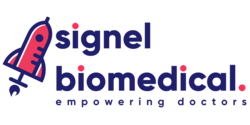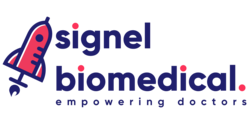
Understanding the Emergencies in Dental clinics
An emergency is a medical condition demanding immediate treatment. Emergencies do occur in dental clinics. Every dentist should have the basic knowledge to recognise, assess and manage a potentially life-threatening situation until the patient can be transported to a medical facility. Dental clinics can have medical emergencies ranging from allergic reactions to cardiac events. Being prepared to handle such situations efficiently is crucial for ensuring the safety and well-being of both patients and staff. In this blog post, we'll delve into key medical emergency preparedness tips tailored specifically for dental clinics, empowering them to respond effectively in critical situations.
Dental clinic emergency preparedness
Preparing the staff of your dental clinic can really help you to handle any emergency situation in your practice .
Lets find out the Preparation For Dental office emergency procedures :
1. Identify Potential Medical Emergencies:
First and foremost, dental clinics must recognize the range of medical emergencies that could occur within their premises. These may include allergic reactions to anesthesia or medication, respiratory distress, syncope (fainting), seizures, and cardiac events such as heart attacks. Understanding these potential emergencies is the first step toward preparedness.
2. Prevention
Comprehensive medical history must be recorded for all the patients and must be updated regularly. An assessment should be made to judge patients with severe medical conditions should be undertaken as to their suitability for undertaking dental treatment. Patients with severe or unstable medical conditions should be referred for treatment in dental hospital. Patients should be given to fill the medical history form to know about the details of their any medical histories prior of any dental treatment.

3. Training for Dental office medical emergency response team
The staff in the clinic should have appropriate training. A team approach to resolve of medical emergencies should be inculcated. Protocols should be in place so that staff members know their role in managing emergency situations.
Here ‘s what dental team should be equipped with to handle any emergency situation in clinic :
4. Equip dental clinics with medical emergency kits
Stock your clinic with a well-maintained medical emergency kit containing essential supplies to address various medical situations. The medical equipments and drugs required in emergency conditions should be added . Regularly check and replace expired items to ensure readiness.
ESSENTIAL EMERGENCY DRUGS :
| Drugs | Indication | Initial Adult Dose |
|---|---|---|
| 1. Oxygen | Almost any medical emergency | 100%inhalation |
| 2. Epinephrine | Aasthma,Cardiac arrest. | 0.1 mg IV or 0.3-0.5mg IM. 0.1 mg IV . |
| 3. Nitroglycerin | Angina pain | 0.3-0.4mg sublingual |
| 4. Antihistamine (dephenhydramine) | Allergic relations | 25-50mg IV, IM. |
| 5.Albuterol/salbutamol | Asthmatic bronchospasm | 2sprays: inhalation |
| 6. Aspirin | Myocardial infraction | 160-325 mg. |
| 7 . Glucagon | hypoglycemia in unconscious patient | 1 mg IV or IM. |


5. Establish Clear Emergency Protocols:
Develop detailed emergency protocols specific to medical situations that may arise in your dental clinic. Outline step-by-step procedures for responding to different emergencies, including who to contact, how to initiate emergency medical services (EMS), and how to provide immediate assistance to the affected individual while awaiting professional help.
Let’s understand steps to be followed in certain medical conditions
Management
Management
Place in supine position. Maintain airway. Give O2. Obtain IV access up to 500 mg hydrocortisone IV immediately. Ensure help (i.e. an ambulance) is requested. Exclude other causes of collapse.
Management
Allow the patient to adopt the most comfortable position for breathing and give oxygen (5 litres per minute) by facemask. The drugs are given in the following order:

6. Maintain Open Communication Channels:
Effective communication is critical during medical emergencies to coordinate response efforts and provide timely updates to staff, patients, and emergency responders. Ensure that all staff members know how to activate emergency protocols and communicate effectively with each other and with external emergency service
7. Conduct regular dental office medical emergency drills
Practice makes perfect, especially in emergency situations. Conduct regular drills and simulations to test your clinic's emergency preparedness plans and identify areas for improvement.

These exercises help familiarize staff with emergency procedures, build confidence in their ability to respond effectively, and reinforce the importance of preparedness.
8. Dental clinic medical emergency communication
Establish strong partnerships and communications with local emergency services, hospitals, and medical professionals to enhance your clinic's emergency response capabilities. Coordinate with EMS providers to streamline the transfer of patients requiring advanced medical care and establish protocols for seamless collaboration during emergencies.

CONCLUSION :
Medical emergencies can occur unexpectedly in dental clinics, underscoring the importance of proactive preparedness. By identifying potential emergencies, equipping clinics with essential supplies, training staff in emergency response techniques, establishing clear protocols, maintaining open communication channels, conducting regular drills, and collaborating with external resources, dental clinics can effectively mitigate risks and ensure the safety and well-being of everyone within their premises. Investing in medical emergency preparedness is not only a legal and ethical responsibility but also a cornerstone of providing quality dental care in a safe and secure environment.













